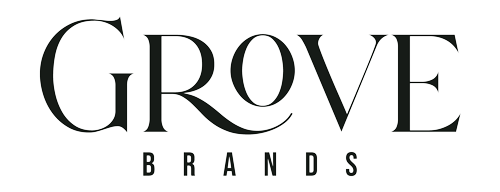What’s a Brand Framework and Why Do You Need One?
Building a strong brand doesn’t happen by accident. It’s the result of clear, consistent choices with purpose. And a brand framework provides this structure so you can align every element of your strategy, from your visual identity to your messaging and customer experience. Find out what it takes to create an effective branding framework for your business in this latest guide.
What is a brand framework?
A brand framework is a strategic foundation that defines who you are as a brand, what you stand for, and how you show up in the world. It brings clarity to your mission, values, voice, positioning, and identity so that every brand touchpoint is aligned and cohesive.
Whether you're just starting out or refining your brand for the next phase of growth, a well-defined brand framework keeps your team focused and your messaging consistent across all channels.
Key elements to start with in a brand framework
At the heart of an effective brand framework is your brand’s core identity. This identity goes beyond the visuals and encompasses the core values, mission, and vision of your business.
When working with clients, we like to start with a few identifying questions that help guide internal decisions and clarify what you care about, what you stand for, and what you’re trying to do:
Creating a mission statement: What does your business do? Who does it do it for?
Establishing the vision: What’s the future you’re working toward? How does your brand contribute to this?
Identifying core values: What principles shape how your business operates and communicates with teams and customers?
Understanding brand positioning
Your brand positioning is what sets you apart from other, similar businesses in your market. Your position will also help you figure out your ideal audience, identify what makes you different, and clarify the specific benefits you offer.
When you get this nailed down, it’s easier to create ad copy and marketing campaigns that resonate because you’re speaking directly to the people your business is there to serve.
Establishing your visual and verbal identity
This part of the brand framework brings your business to life visually and in every piece of content you develop across your website, social platforms, and print materials. A comprehensive visual identity should include:
Logos and color palettes
Typography and design standards
Brand voice, tone, and key messaging
Writing style guidelines
Related: What Is an Evoked Set? An Overlooked Asset of Branding Strategy
Why is it important to have a brand framework?
Without a framework, you could struggle to stay consistent or create messaging that doesn’t really connect with your audience. A solid brand framework ensures every business decision is intentional and grounded in who and what your brand is.
builds brand recognition
Consistency leads to familiarity. Messaging, design, and tone that’s all in alignment will help your brand become more recognizable across the channels you engage in, making it easier for customers to trust you.
aligns internal and external teams
Whether you're a solo entrepreneur or managing teams, a brand framework keeps everyone on the same page. It takes away the guesswork from creative decisions like content development, and it serves as the single source of truth on how your brand interacts with others.
supports long-term growth
Brands that create a strong foundation and stay consistent in their identities scale more easily and with fewer challenges. With a consistent approach to branding, you’ll be better equipped to expand your reach, create more offerings, and adapt to new markets without losing the core essence of your business.
In fact, 68% of companies reviewed in a Capital One Shopping survey reported that brand consistency was a major contributor to at least 10% of their revenue growth. And the main factor in this success? A brand framework to support and guide long-term efforts.
Related: Why Branding Matters: The Key to Sustainable Business Growth
How to create a comprehensive brand framework for your business
Creating a brand framework means bringing clarity to what makes your business unique and how it’s reflected in your operations.
Here’s how to build one that adapts to your goals and captures your brand’s essence:
1. Audit what you already have
Before you start from scratch, take a closer look at your existing brand assets, positioning, and messaging. Figure out what’s working and what feels outdated or inconsistent. This gives you more clarity and helps you decide what to keep, refine, or get rid of altogether.
2 Define each element intentionally
Review each element intentionally, evaluating your brand’s mission, vision, values, positioning, audience, tone, and visuals — like professional logo design, color palettes, and typography. If you have team members, collaborate on these factors to better understand the core of the business.
You can also use information from customer feedback and competitors for even more insights to support your decisions, but stay consistent with what makes your voice your own.
3. Document it and share it
Your framework should be a living, accessible resource. Create clear, actionable brand guidelines that your team or other collaborators can refer to easily and often. When everyone understands the brand framework, they can apply it consistently across every channel you use to engage with your audience.
Related: BLUF Acronym: What It Is and How It’s Used
Create a brand framework that drives growth by partnering with Grove
A strong brand framework doesn’t just clarify your business. It also amplifies it. At Grove, we help small and growing businesses define their unique identity, align their strategy, and create lasting impact through data-driven approaches to branding and marketing that build trust and support growth.
If you're ready to elevate your brand with intention and clarity, we’re here to help. Give us a call and book a consultation to get started.


